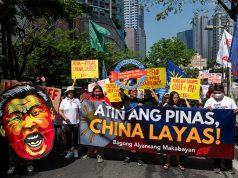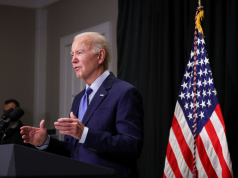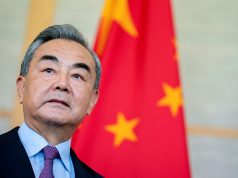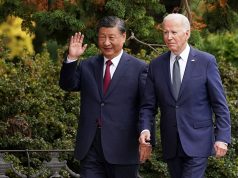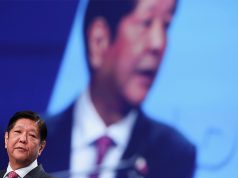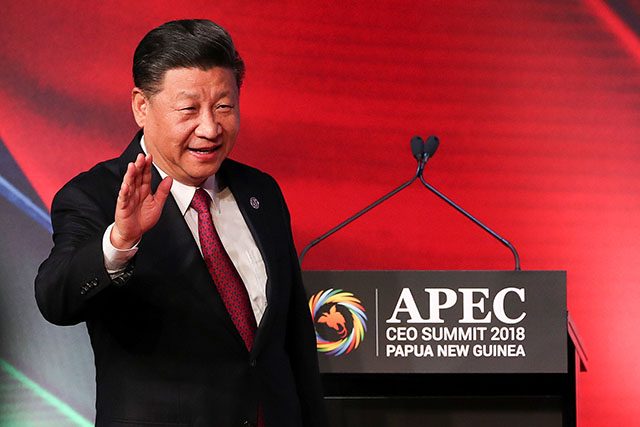
In anticipation of Chinese President Xi Jinping’s arrival in the Philippines on Tuesday for a state visit, some social media users urged the public to bring out pictures, effigies and costumes of Winnie the Pooh as a sign of protest.
President Rodrigo Duterte in October 2016 invited Xi to the Philippines when he went to China for a state visit.
The chief executive also extended an invitation for the Chinese president to visit his Davao residence as well.
Xi is hoping to deepen the two countries’ “political mutual trust” with each other in terms of bilateral and international issues, as well as enhance their cooperation in business, trade, infrastructure, agriculture, and tourism, among others.
Some Filipinos, however, were not too pleased with the announcement in light of the ongoing territorial dispute between the two countries.
READ: Duterte: China should temper its behavior in disputed waters
Instead, they urged the public to showcase any Winnie the Pooh-related pictures, costumes and effigies.
To all those protesters who will welcome Chinese President Xi Jinping, don't forget to have pictures, costumes or giant effigy of "Winnie the Pooh" 🤓🤓🤓 #xiiswinnie
— Mauricio (@AtheeHeureux27) November 19, 2018
Xi Jinping is coming to the Philippines next week, so those of you who want to show the world he is not welcome here, wear Winnie the Pooh shirts or hang Winnie the Pooh tarps. Why? Because it pisses him off. Pooh is banned in China because Western media says it looks like him 😂 https://t.co/pKHvvI59Fz
— Dara Cohen (@daraaacohen) November 5, 2018
Xi Jinping as Pooh
Winnie the Pooh is a fictional cartoon character created by A.A. Milne that was popularized when Disney adapted it to television series and animated films.
Last year, the Chinese government banned all mentions of the cartoon character on their social media platforms after users began circulating pictures of Xi walking with former United States President Barack Obama in 2013.
The pictures were juxtaposed against that of Pooh and Tiger, his best friend.
So I just found out that China banned Winnie the Pooh because this comparison photo feat. Xi Jinping and Obama went viral on Weibo. Lol. pic.twitter.com/RVmV6kBrIj
— Santiago Arnaiz (@TiagoArnaiz) August 11, 2017
Social media users continued to juxtapose Xi’s picture when he attended an international conference with Japanese Prime Minister Shinzo Abe in 2014.
Xi and Abe were compared to Pooh and Eeyore, respectively.
This might be one of my favourite @BBCNews articles ever: "Why China censors banned Winnie the Pooh" https://t.co/De45obt0Nt pic.twitter.com/6onOZ4x5sb
— Justin Yi-Wei Lau (@justinywlau) July 17, 2017
The year after, a picture of Xi standing in a parade car was juxtaposed with Pooh in a toy car.
The Chinese president participated in a military parade that celebrated their country’s victory against Japan in the Second World War.
The image became China’s most banned picture on the internet in 2015 but prior to its censorship, users have shared it more than 65,000 times on Weibo, a Chinese social media platform.
(Web) En Chine, la photo la + censurée en 2015 est celle d'un jouet Winnie l'Ourson utilisée pour railler Xi Jinping pic.twitter.com/YvddMCkbRR
— Chronique Disney (@ChroniqueDisney) January 6, 2016
The Chinese government also banned the showing of “Christopher Robin” in the country. It is a movie that features Pooh and his friends in the Hundred Acre Wood, together with a grown-up Christopher Robin.
As a result of the censorship imposed by the Chinese government, the Chinese characters of Winnie the Pooh is banned in Weibo. An attempt to type his name in a comments thread would reportedly produce a message that reads “content is illegal.”
WeChat, another popular Chinese social media platform, also took down every animated GIFs and illustration they have in their media gallery that represents Pooh.
China’s internet censorship
A report by The Guardian published in June 2018 notes that ever since Xi took office, the state of internet censorship in China has been the “most sophisticated” and “largest” one yet.
An excerpt of it reads:
“The advent of Xi Jinping in 2012 brought a new determination to move beyond deleting posts and passing regulations. Beijing wanted to ensure that internet content more actively served the interests of the Communist party.”
“Within the virtual world, as in the real world, the party moved to silence dissenting voices, to mobilise party members in support of its values, and to prevent foreign ideas from seeping into Chinese political and social life.”
Even before Xi became president, however, China already regulated the use of the internet since 1997 as a communist state. Any information, picture, or video that sends anti-government sentiments would be taken down and its source blocked.
The initiative was only formalized when the government created “The Golden Shield Project” in 2000 with a repurposed aim to restrict the access of their citizens in foreign websites (particularly the Western ones), block foreign search engines and social media platforms, among others.
Apps of the same blocked platforms cannot be downloaded on computers and smartphones as well.
Some of the banned websites and apps are Google, Facebook, Twitter, Instagram, YouTube, Vimeo and Western media outlets such as The New York Times and The Guardian.
The project is enforced and supervised by China’s Ministry of Public Security.




